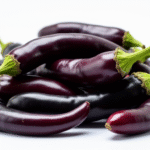The Importance of Late-Life Exercise
More is better than never. An increasing number of people are considering starting physical exercise after 50 years old. Is it a good idea? Medical associations unanimously agree: physical exercise is crucial in disease prevention and is even recommended as part of treatment for many conditions.
However, starting to move in this stage of life requires certain precautions. Especially for those who didn’t engage in physical activity previously or individuals with overweight or obesity.
It has been proven that beginning exercise with overly demanding routines, especially when combined with an inadequate diet, can cause significant muscle and bone injuries.
This risk is even greater after 50, as age-related loss of muscle and bone mass intensifies.
Therefore, before starting any exercise program, it’s advisable to conduct a comprehensive analysis to assess the need for supplementation if any micronutrient deficiencies are present.
The Crucial Role of Proteins
Besides micronutrients, the body requires macronutrients: carbohydrates, fats, and proteins. The latter provide the essential amino acids necessary to maintain and develop muscle mass, prevent sarcopenia (muscle loss related to aging), muscle injuries, and osteoporosis.
Protein requirements vary depending on the individual’s clinical situation. For physically active individuals over 50 engaging in moderate exercise, their needs range from 1 to 1.5 grams per kilogram of body weight daily.
However, increasing protein intake without corresponding physical activity can have adverse effects, especially on bone health, as it may increase calcium excretion in urine (calciuria) due to decreased tubular reabsorption of calcium.
Balanced Sources: Plant-Based or Animal, It Matters
Protein sources should combine plant-based options like soy, chia seeds, pumpkin seeds, peanuts, or lentils with animal-based ones like eggs, dairy, poultry, or fish.
While a balanced diet with both types of nutrients is ideal, following vegetarian guidelines has been shown compatible with high-performance sports if proper medical and nutritional monitoring is in place.
Moreover, the distribution of protein intake throughout the day is more beneficial than concentrating it in one meal. Ensuring adequate protein intake 30 minutes before or after exercise will enhance its absorption and availability in the body.
Essential Micronutrients: Magnesium, Calcium, and Vitamin D
Regarding micronutrients (vitamins and minerals), some play a crucial role in sports performance at this age, such as magnesium, calcium, and vitamin D.
Magnesium aids muscle recovery and bone formation. It can be found in whole wheat bran, cheese, pumpkin seeds, or linseeds.
As for calcium, it’s essential for maintaining proper bone mineralization and preventing bone density loss (osteopenia) associated with calcium deficiencies in the blood.
Traditionally, dairy products have been a significant ally for bone health due to their high bioavailability of calcium and vitamin D content in full-fat versions.
Other plant-based sources like sesame paste, almonds, linseeds, soy, or hazelnuts are also considered calcium sources. However, their phytate and oxalate content can hinder absorption.
Lastly, blue fish (tuna, mackerel, sardines, or salmon) and egg yolk are complementary sources of vitamin D within a diet focused on individuals over 50 who exercise regularly.
Maintaining proper hydration before, during, and after exercise is equally important. Both dehydration and overhydration can affect performance and increase the risk of muscle injuries.
Does Exercise Type Matter?
Up to this point, we’ve discussed how nutrition influences sports performance and, ultimately, the risk of injury. However, another factor comes into play: the type of exercise.
Currently, there’s an interesting debate about which exercise type is most suitable based on age, sex, or body composition; whether strength training should be prioritized, alternated with cardio sessions, or done on different days.
Despite the varying theories, one thing is clear: regular exercise, tailored to individual capabilities and with proper medical-nutritional monitoring, reduces the risk of multiple diseases and improves quality of life.
Key Questions and Answers
- Q: Why is exercise important after 50? A: Regular physical activity is crucial for disease prevention and treatment, as recommended by medical associations.
- Q: What precautions should be taken when starting exercise after 50? A: Individuals with no prior physical activity or those with overweight/obesity should exercise caution to avoid injuries, especially muscle and bone injuries due to age-related loss of muscle and bone mass.
- Q: How much protein do active individuals over 50 need? A: Their daily protein intake should range from 1 to 1.5 grams per kilogram of body weight.
- Q: What are the best protein sources? A: Combining plant-based (soy, chia seeds, etc.) and animal-based (eggs, dairy, poultry, fish) protein sources is recommended.
- Q: Why are micronutrients important for sports performance after 50? A: Micronutrients like magnesium, calcium, and vitamin D play a crucial role in muscle recovery, bone formation, and overall sports performance.
- Q: Does the type of exercise matter? A: Regular, individual-capable exercise with proper medical-nutritional monitoring is essential for reducing disease risk and improving quality of life, regardless of specific exercise type.






